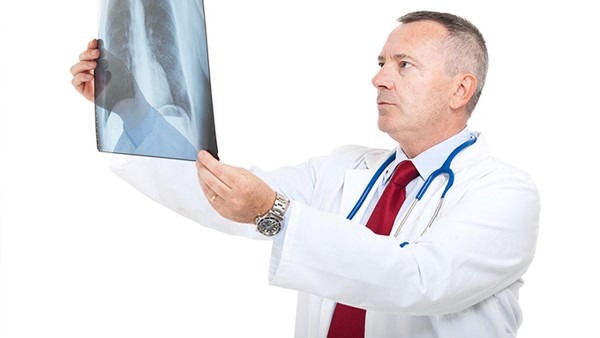How to Treat Congenital Diaphragmatic Hernia

Congenital diaphragmatic hernia (CDH) is a birth defect that occurs when there is a hole in the diaphragm, the muscle that separates the chest from the abdomen. This can allow the abdominal organs, such as the stomach, intestines, and liver, to move into the chest cavity. CDH can be life-threatening if it is not treated promptly.
The symptoms of CDH can vary depending on the size of the hole in the diaphragm and the organs that have moved into the chest cavity. Some babies with CDH may have difficulty breathing, while others may have difficulty eating or vomiting. In severe cases, CDH can lead to heart failure or death.
The diagnosis of CDH is usually made before birth during a prenatal ultrasound. However, it can also be diagnosed after birth if the baby has symptoms of respiratory distress.
The treatment for CDH typically involves surgery to repair the hole in the diaphragm and move the abdominal organs back into the abdomen. Surgery is usually performed within the first few days of life.
The outlook for babies with CDH depends on the size of the hole in the diaphragm and the organs that have moved into the chest cavity. Babies with small holes and no herniated organs have a good prognosis. However, babies with large holes and herniated organs have a more guarded prognosis.
Types of CDH
There are two main types of CDH:
Bochdalek hernia: This is the most common type of CDH, accounting for about 85% of cases. It occurs when there is a hole in the posterior (back) part of the diaphragm.
Morgagni hernia: This type of CDH occurs when there is a hole in the anterior (front) part of the diaphragm. It is less common than Bochdalek hernia, accounting for about 15% of cases.
Causes of CDH
The exact cause of CDH is unknown. However, it is thought to be caused by a combination of genetic and environmental factors. Some of the risk factors for CDH include:
Maternal diabetes: Babies born to mothers with diabetes are at an increased risk of CDH.
Maternal obesity: Babies born to obese mothers are also at an increased risk of CDH.
Smoking during pregnancy: Smoking during pregnancy has been linked to an increased risk of CDH.
Certain medications: Some medications, such as valproic acid, have been linked to an increased risk of CDH.
Symptoms of CDH
The symptoms of CDH can vary depending on the size of the hole in the diaphragm and the organs that have moved into the chest cavity. Some of the most common symptoms include:
Respiratory distress: This is the most common symptom of CDH. Babies with CDH may have difficulty breathing, especially when they are lying down. They may also have a bluish tint to their skin (cyanosis).
Difficulty eating: Babies with CDH may have difficulty eating because the stomach has moved into the chest cavity. They may vomit or have difficulty gaining weight.
Constipation: Babies with CDH may also have constipation because the intestines have moved into the chest cavity.
Heart failure: In severe cases, CDH can lead to heart failure. This is because the heart has to work harder to pump blood through the lungs.
Diagnosis of CDH
The diagnosis of CDH is usually made before birth during a prenatal ultrasound. However, it can also be diagnosed after birth if the baby has symptoms of respiratory distress.
The following tests may be used to diagnose CDH:
Ultrasound: This is a non-invasive test that uses sound waves to create images of the inside of the body. Ultrasound can be used to detect a hole in the diaphragm and to see if any organs have moved into the chest cavity.
X-ray: An X-ray can also be used to detect a hole in the diaphragm. However, it may not be as sensitive as an ultrasound.
Magnetic resonance imaging (MRI): An MRI is a more detailed imaging test that can be used to confirm the diagnosis of CDH and to see if any other organs have been affected.
Treatment of CDH
The treatment for CDH typically involves surgery to repair the hole in the diaphragm and move the abdominal organs back into the abdomen. Surgery is usually performed within the first few days of life.
The type of surgery that is performed will depend on the size of the hole in the diaphragm and the organs that have moved into the chest cavity. In some cases, a simple repair may be all that is needed. However, in other cases, a more complex surgery may be necessary.
After surgery, the baby will be monitored closely in the hospital. They may need to be on a ventilator to help them breathe. They may also need to be given antibiotics to prevent infection.
The outlook for babies with CDH depends on the size of the hole in the diaphragm and the organs that have moved into the chest cavity. Babies with small holes and no herniated organs have a good prognosis. However, babies with large holes and herniated organs have a more guarded prognosis.
Long-Term Outlook for Babies with CDH
With early diagnosis and treatment, most babies with CDH will go on to live healthy lives. However, some babies may have long-term problems, such as:
Respiratory problems: Babies with CDH may have difficulty breathing, especially when they are exercising or when they have a cold.
Digestive problems: Babies with CDH may also have difficulty eating, vomiting, or constipation.
Developmental delays: Babies with CDH may have developmental delays, such as delayed walking or talking.
Learning disabilities: Babies with CDH may also have learning disabilities, such as difficulty with reading or math.
If your baby has CDH, it is important to work closely with your doctor to monitor their health and development. With early intervention and support, most babies with CDH can go on to live happy and productive lives.
The above is all the content that the editor wants to share with you. I sincerely hope that these contents can bring some help to your life and health, and I also wish that your life will be happier and happier.
Tags: #treat #to #how















